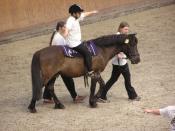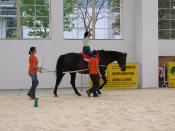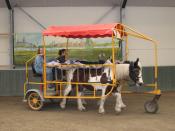Hippotherapy and Therapeutic Riding 5
Hippotherapy and Therapeutic Riding
A Review of the Article
Emily Artrip
Oct 100, Article Review
Annette Looney
October 7, 2014
Laurie Hiemenz, explains in, Hippotherapy & Therapeutic Riding, the similarities and the differences of therapeutic horseback riding and hippotherapy. She clarifies the therapeutic mechanisms of hippotherapy and therapeutic horseback riding in depth. Laurie tells the history of the two all the way from 600 b.c till now. She shows the statistics of how each therapy helps and has an impacted on the patients. She also covers the safety regulations and procedures that the two therapies have to take into consideration.
Hippotherapy and therapeutic horseback riding are very similar. The two both use horses as their main resource of therapy. The pelvic movement of the horse actually imitates the walking movement of the human walking for the rider. The motion that the horse makes while moving, the rocking and side to side motion helps the rider develop strength, coordination and self-confidence.
These types of therapies not only help the patients regain strength, coordination and self-coordination but it allows the patient to enjoy the therapy and is something they will always remember. Laurie Hiemenz states that "The movement of the horse gently, rhythmically forces the rider to respond physically", she explained the reasoning of this response earlier when she said "the pelvic movement mimics walking of the rider."
Laurie Hiemenz explains how the therapies themselves work in the article. The riders are positioned on the horse, usually bareback and with some sort of handle of stability. The rider can be in many different positions depending on which position will be more efficient for the patient. In hippotherapy the rider does not have control over the horse, the handler has control and is directed by the therapist.


